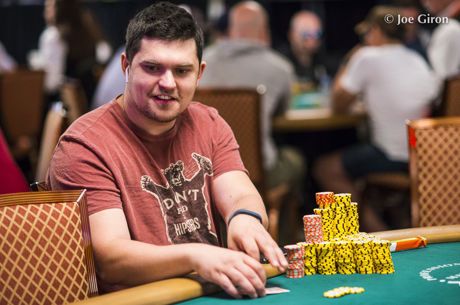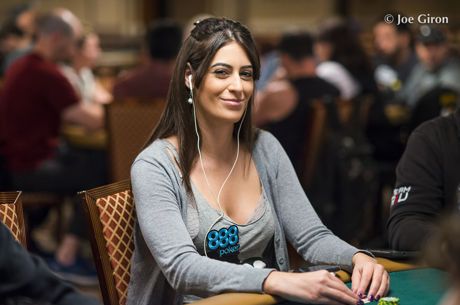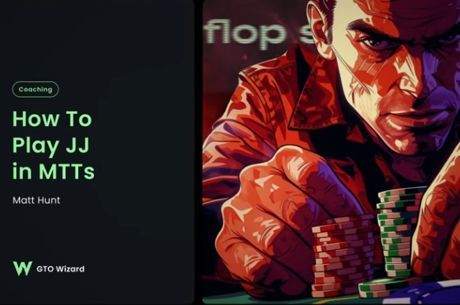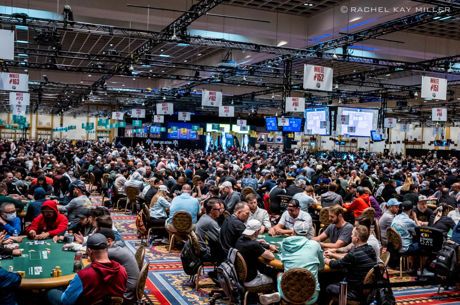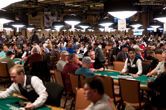Bluffing With the Bottom of Your Range
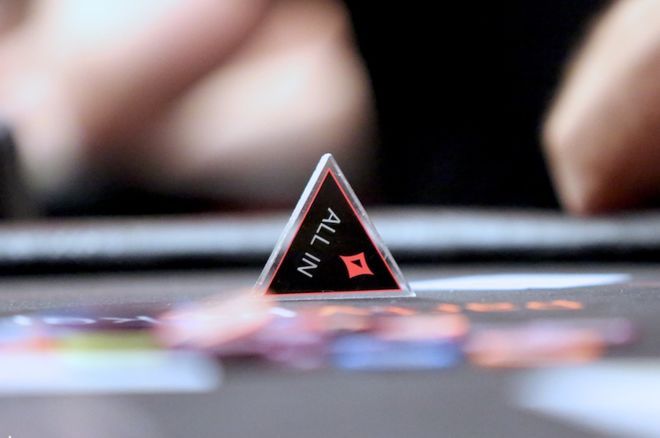
Sometimes you'll find yourself at the bottom of your range, with no showdown value whatsoever. Even if you play in games that do not recommend bluffing, when you find yourself at the absolute bottom of your range, you might be otherwise advised.
What follows is a hand illustrating just such a situation, and how for those not paying too close attention, the river bluff with garbage might appear crazier than it really is.
Preflop: A Three-Bet, and Three Players
The game is six-handed 100NL ($0.50/$1.00) played online, and the hand begins with a recreational player opening from middle position to $3, followed by a loose-aggressive player three-betting on the button to $8. Another recreational player cold-called the three-bet out of the small blind, and the initial raiser called as well.
The flop came A?4?7? and it checked around to the three-bettor on the button.
Let's Talk About Ranges
We can't quite assume that neither preflop caller has AxKx. In today's online games, many players will be reluctant to get ace-king in preflop in certain circumstances, especially those that involve three-way action or an early position initial raise. The small blind could very well have AxKx, being reticent to four-bet and preferring to see the action unfold.
Otherwise, we might well assume neither blinds has aces or kings.
The button, meanwhile, having chosen a smaller sizing and having a high three-betting percentage, could have quite a wide range, including suited hands like 5x4x, Ax2x, and 7x6x (looking primarily at hands pertinent to this flop).
After being checked to, the button continuation bet one-third of the pot �� about $8 into a pot of $25. The small blind immediately folded and the initial raiser called.
Looking at Board Texture
The turn was the 5?, making the board A?4?7?5?.
There are a lot of possible gutshots on this turn card. Even though some might regard the board as dry, both of the remaining players in the hand are known to be relatively loose preflop, meaning hands with a deuce, a three, a six, or an eight are all possible for either player's range.
All of this means a few things, including a lack of immediate fold equity for the button if he continues betting, but an increase in equity for the button's bluffs.
Meanwhile the out-of-position player, who check-called the flop, has signaled that he has an ace, and some of those aces will have added a straight draw on this card, while ace-five paired up. A straight draw, like 6x5x-suited, will be less inclined to fold now that it has picked up a pair and five more outs against top pair, good kicker.
The recreational player in middle position checked to the button, who again bet one-third pot or $13 into about $40. The middle-position player called.
Not Every Offsuit Deuce is a Brick
And one would not be in this situation. The concept of a board bricking out, or a single card being a brick, is relative to the board. If it changes the board or completes a draw, then the card could not be considered a brick.
In this exact hand, however, the river was the 9?, making the final board A?4?7?5?9?. Given the nature of the ranges involved, this is an almost archetypal brick. Very few hands that were second-best had their fortunes revised by this card.
The recreational player �� to recap: raised in early position, called a three-bet, check-called a flop bet on an ace-high board, check-called again on the turn �� would appear married to his hand and the idea of winning this pot, which by now has inflated to 66 big blinds.
The player checked a third and final time, and the button moved all in for around the size of the pot.
What to Do
It is hard to say with which hands the recreational player should call. If he beats ace-king, he should call �� this is hopefully obvious �� since he beats the button's main value hand. But after that, things get less obvious. Should he call with AxQx? Should he call with any ace? Which ones?
Some aces, such as Ax2x, Ax3x, Ax6x, and Ax8x naturally picked up equity that went unrealized, and are not left with a naked bluff-catcher. A hand like Ax6x might be better to call with than AxJx because ace-six beats the same number of value hands (none) while blocking some straights.
In any case, the recreational player had rivered two pair with A?9? and snap-called. The button got caught with his hand in the cookie jar and K?3?.
Ah, to watch the courageous loose-aggressive players go up in flames! But was the button's bluff shove that dubious?
He does block ace-king. He also has precisely zero showdown value. Even a hand like 10?9? could check back here, having semi-bluffed twice, and win at showdown on occasion. The same might even be said for 3x3x. But K?3? cannot even beat king-high clubs that floated the flop and turned a draw. It truly is the bottom of the barrel.
Because it would never win at showdown, and there are hands to target with this bluff such as 6x5x, 6x6x, 7x6x, and even Ax2x that could wilt under the pressure of a triple-barrel all-in, we could in fact still be looking at a regular who is taking this line for value 95 percent of the time.
But because he chose to bluff with the absolute bottom of his range, he managed to appear to the recreational player like a total maniac.

